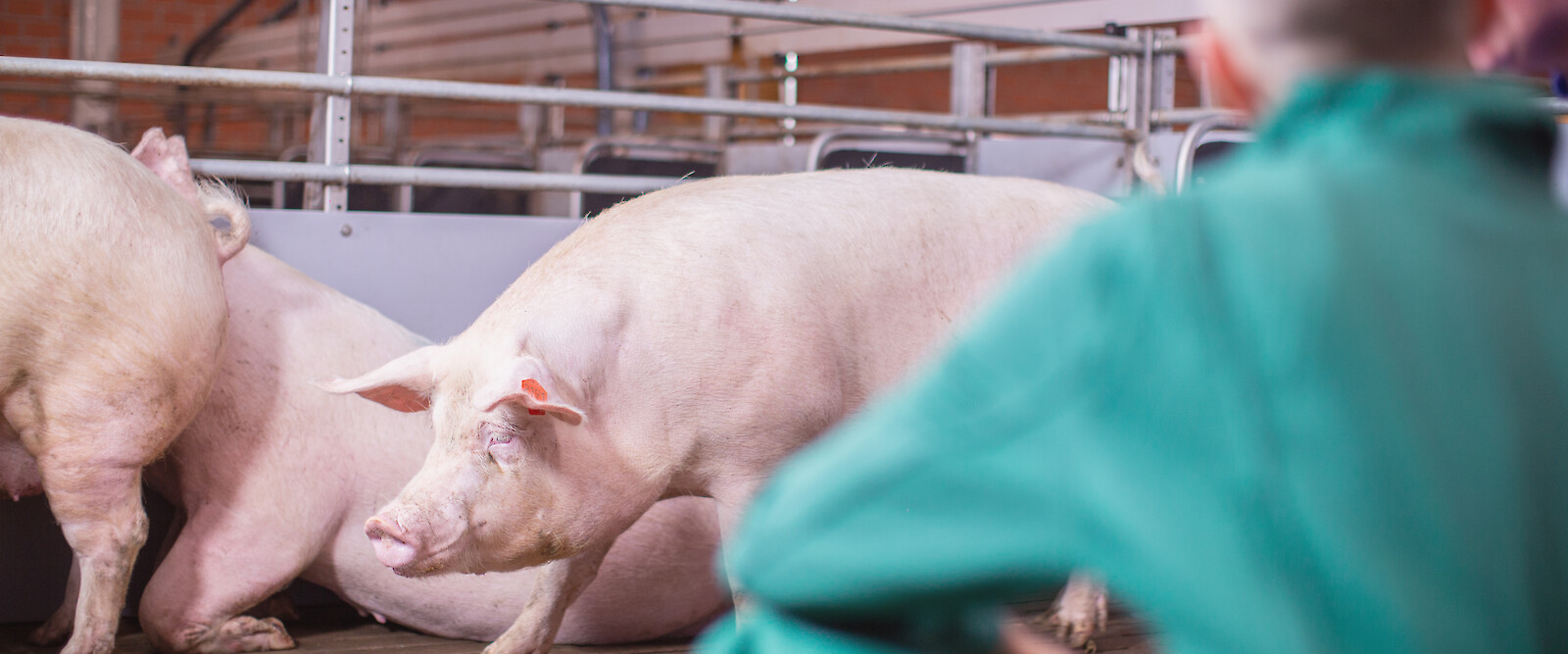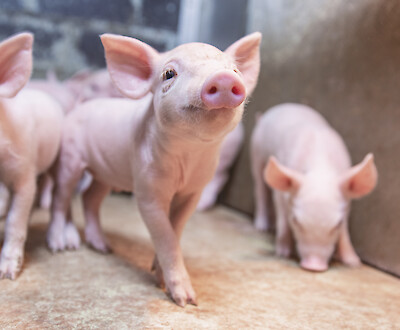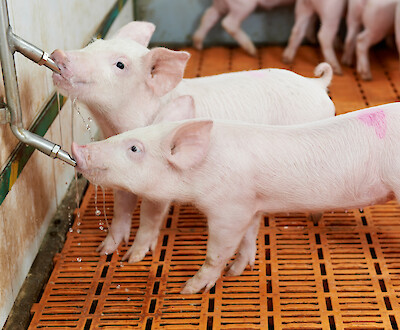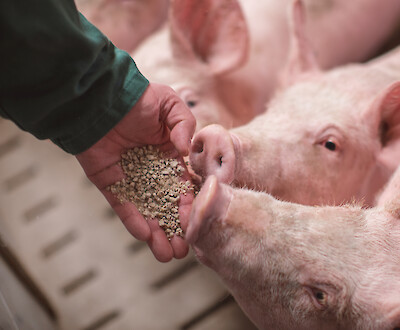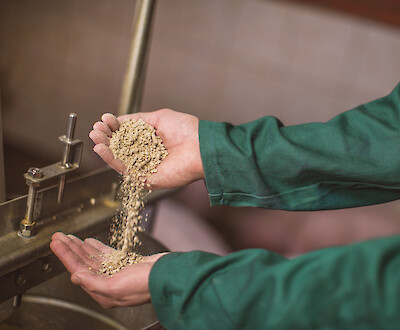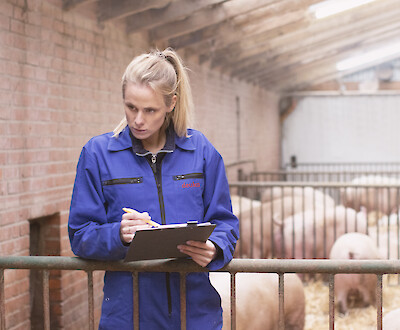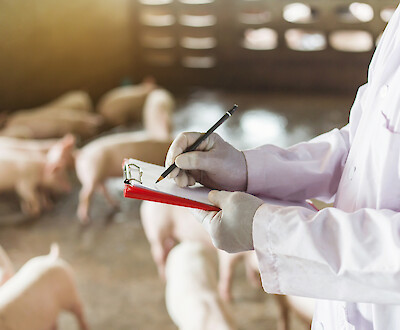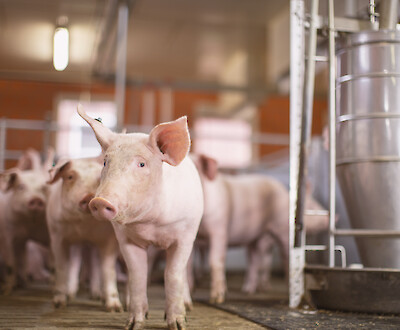Cannibalism in pig farming is a complicated problem. Many causes can underlie the behavioral disorder. If cannibalism occurs in the herd, animal welfare suffers. At the same time, farm managers are threatened with economic losses. For a long time, docking of curly tails was considered an established prophylactic measure. However, with the entry into force of the "action plan to dispense with docking", it is now only permissible after a risk analysis has been carried out. It is therefore worth looking at alternative strategies. Adapting feeding offers particular opportunities in this respect.
Cannibalism in pig farming refers to behavioral disorders of sows, piglets or fattening pigs. Animals that exhibit cannibalistic behavior chew each other and eventually inflict injuries. There are often three different forms of cannibalism: tail biting, ear biting and flank biting.
Cannibalism can occur surprisingly
Cannibalism in livestock often goes undetected for a long time. However, if it is not detected immediately, the detrimental behavior can escalate rapidly. Pig farmers should therefore keep a close eye on their herd. If animals seem to deliberately suck on the flanks, ears or tails of their pen mates, or if individual animals show bare, hairless tails, these are the first unmistakable signs. Especially now highest attention is required.
Even if an increased incidence is observed in fattening, the behavioral disorder is not limited to individual housing sections. In addition, cannibalism is not limited to specific housing types. The behavioral disorder is observed in conventional husbandry as well as in organic farms.
Cannibalism prophylaxis: more animal welfare, less economic losses
Cannibalism often results in high economic losses for farmers. These consist of veterinary costs for the treatment of injured animals, reduced daily gains and the risk of possible deductions in the settlement at the slaughterhouse. In addition, the separation of victim and perpetrator animals and the therapy of affected animals require additional time.
From an animal welfare point of view, it is also important to avoid the occurrence of cannibalism and at least to get outbreaks under control as quickly as possible. The identification of prophylactic and acute measures is therefore of high importance for all pig farms.
Types of cannibalism: one problem, two manifestations
In "two-stage" biting, there is initially mutual gnawing, which the animals initially perceive as pleasant. However, after the first injuries occur, the animals bite more and more intensively. The situation can escalate. This type of cannibalism is a variation of the animals' innate exploration and play behavior. This behavior is acted out when employment opportunities are not adequately available to the animals.
In contrast to two-stage biting, in this type of cannibalism, the very first attack results in injury. This behavior occurs spontaneously and abruptly and is not caused solely by a lack of animal activity. The health status, husbandry, housing climate and feeding of the animals can also cause spontaneous and violent biting.
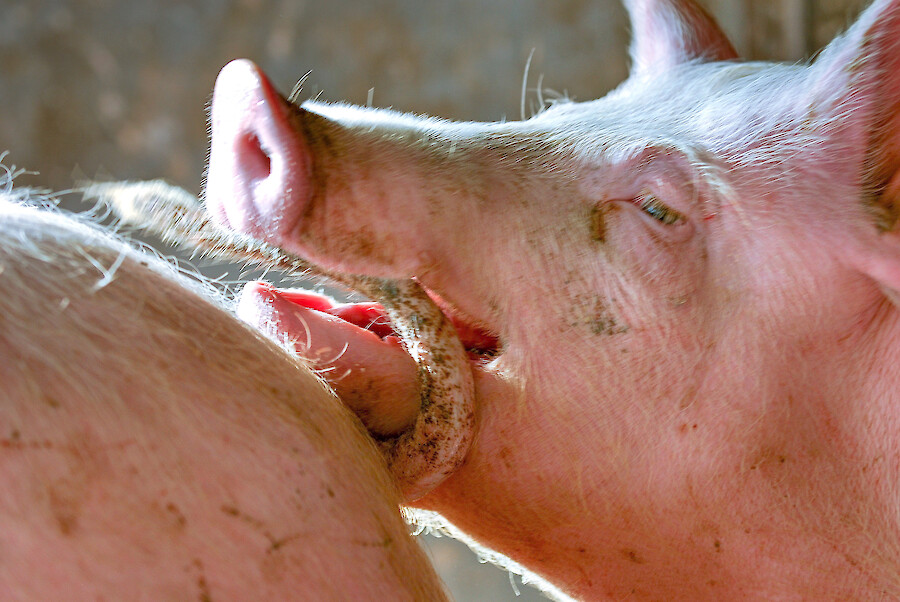
Learning to distinguish ear rim necrosis and signs of cannibalism
At an early stage, pig owners can easily confuse ear rim necrosis and cannibalism-related ear lesions. However, it is easy to distinguish between them: while ear rim necrosis always starts from the tips of the ears and spreads to both ears at the same time, ear lesions caused by cannibalism do not follow a recognizable pattern.
Searching for causes: cannibalism as a multifactorial problem.
An outbreak of cannibalism in livestock is often multifactorial. A patent remedy for solving the problem does not exist. The search for the cause is complicated by the fact that the outbreak usually cannot be clearly traced back to a single cause. To prevent the occurrence of cannibalism in the herd, a detailed examination of the animals, their husbandry and environment is necessary. This is the only way to identify and eliminate possible stressors and thus counteract cannibalism. When dealing with the problem of cannibalism in the herd, it is recommended to systematically follow the measures mentioned below.
-
The composition of the ration requires special attention. It can help prevent cannibalism in the herd and counteract an acute outbreak. Feeding must ensure that pigs are supplied with all important nutrients and active ingredients (proteins, energy, minerals, vitamins and trace elements) in line with their needs. Of course, this also means that the composition and digestibility of the feed is adapted to the husbandry stage, as well as a feed quantity that meets requirements and a sufficient time window for feed intake. This is important because deficiency is also a cause of cannibalism.
A balanced intestinal flora is also important for the well-being of the animals. The basis for this is, among other things, hygienically perfect feed all the way to the trough. Especially in the case of liquid feedings, it is imperative to also check the feed hygiene (including yeasts) in the event of cannibalism problems.
Make sure that the feed is rich in fiber with fiber carriers that can be fermented at different rates. This promotes intestinal activity and leads to an intense feeling of satiety and thus to happier animals. Mixed feeds with an adapted fiber content (e.g. fattening feeds of the DV concept or sow feeds of the digest concept) can thus actively contribute to reducing the risk of cannibalism.
To alleviate acute problems, the additional administration of minerals, sodium chloride, the amino acid tryptophan and highly digestible magnesium sources has proven effective. These supplements can have a calming effect on stressed pigs and thus reduce aggressive behavior in the short term. Lickstones containing other minerals in addition to sodium chloride are suitable for administering the additives, for example. Appropriate additives can also be added to feed and drinking water in liquid (e.g. INCONA Silentium) or solid form (e.g. Silent+). Both products contain highly available magnesium sources. These reduce signal transmission and thus have a calming effect on the pigs' nervous system. INCONA-Silentium also contains tryptophan - an amino acid and important precursor of serotonin. The "happiness hormone" counteracts aggressive behavior in the herd.
Finally, feed contributes to the satisfaction of the search as well as the rooting and chewing behavior, here an additional offer of employment feed can be helpful.
-
Inadequate water supply is a widely underestimated risk factor for cannibalism. If keepers recognize the first signs of a developing outbreak, the first step should be to check the flow rate of the drinking troughs. The flow rate (depending on the live weight of the animals) should be between 0.6 and 1.8 liters per minute. If the water intake of the pigs is too low despite sufficient flow rates, the water quality should be checked with regard to the hygienic safety and the ingredients of the water - this applies especially when using on-farm well water. Water meters provide information on the actual water intake of the animals.
-
Pigs have a pronounced urge to play and burrow. Wild animals spend about seven hours a day exploring their environment and searching for food in the soil. In order to satisfy these primal urges, farms should provide sufficient occupational material for their animals. Jute sacks or ropes, for example, are suitable for this purpose. All materials offered should be changeable, chewable, burrowable and eatable. It is important to keep the materials attractive to the pigs at all times. Managers should therefore replace them regularly. Roughage offered separately in troughs or baskets can also help satisfy the play instinct. Pelleted forms of feed (e.g. the deuka roughage mix) are a technically feasible alternative. Pelleting also prevents the occurrence of floating and sinking layers in the manure, so that this form of presentation is also compatible with the system.
-
The general health status of the animals also plays a role. Certain manifestations of cannibalism (e.g., ear or tail biting) are associated with tissue damage and necrosis as a result of infection with intestinal bacteria such as Escherichia coli (E. coli). As a result, endotoxins can be detrimental to animal health. The resulting metabolic stress worsens blood circulation and causes tissue death on ears or tails. If conspecifics gnaw on these highly itchy areas, affected animals initially perceive this as pleasant. If the first blood flows, this intensifies the biting and the situation escalates. The first step is to eliminate the cause of bacterial proliferation. Endotoxin binders added to the feed can also reduce the risk of tissue damage and necrosis. Rock flour or the addition of piglet peat and rooting earth are suitable for this purpose. Regular inspection and cleaning of feeding equipment and silos prevent contamination with harmful germs. In addition, regular monitoring of animal health in close consultation with the responsible veterinarian offers a remedy.
-
An unfavorable housing environment is an important stressor and thus a possible cause of cannibalism. Pig farmers should avoid overcrowding in the pens as far as possible, since a close density of pens increases the aggressiveness of the animals. The German Animal Welfare Ordinance (TierSchNutztV) provides guidance on choosing the appropriate number of pigs per pen. Structuring the pens into clearly defined functional areas - and thus separating defecation and lying areas - can also help. The installation of partition walls or a privacy screen also creates resting areas.
-
High concentrations of harmful gases in the barn air are another risk factor for cannibalism. Acute action is required at the latest when pig farmers notice eye irritation when entering the compartment. Correct adjustment of ventilation is the first remedy. Drafts in the pens must be avoided at all costs. This can blow away the thin thermal coat of the temperature-sensitive animals and lead to a cooling of the mucous membranes. This causes stress and promotes the occurrence of aggressive behavior. Temperature fluctuations between day and night can also cause restlessness in the flock, leading to cannibalism. This is especially important in spring and fall. Temperature differences of four to five °C are already sufficient. Especially during weather changes, regularly check whether the temperatures in the barn are stable and within the animals' comfort range.
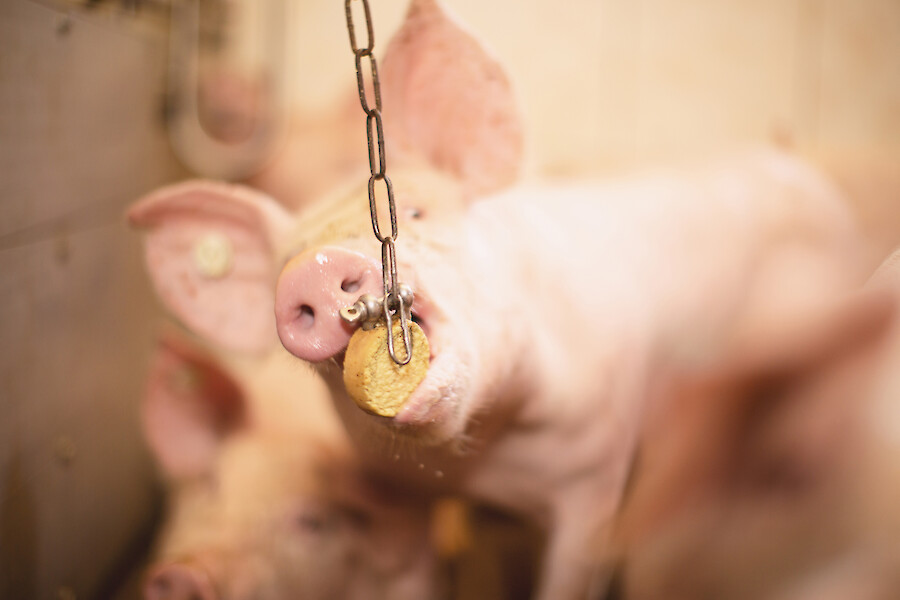
"Getting a taste" - Why it's so difficult to get the animals off the blood
The sense of taste is composed of six different qualities: sweet, salty, bitter, sour, umami (jap. tasty, spicy) and fat. The tastes umami, fat, sweet and salty correspond to the basic nutrients of pigs. At the same time, all these components are contained in blood. If pigs are to be distracted from the taste of blood, the alternative must be nutrient-rich and particularly tasty at the same time. Here, even an addition of cattle salt can reduce what is happening.Conclusion
- Cannibalism is a common behavioral disorder in sows, piglets and fattening pigs.
- Aggressive cannibalistic behavior can be observed regardless of the type and form of housing.
- The two main forms of cannibalism are two-stage biting and sudden violent biting.
- Cannibalism is a multifactorial problem. Prophylactic measures and those that counteract acute infestations address several issues at the same time.
- Sufficient occupation of the pigs is no less important than treatment of infections, sufficient and high-quality water, a good barn climate, and feeding that meets the needs and is hygienic.
Further links
- Entry "Cannibalism (pig)" in the online medicine wiki "Flexikon".
- The wording of the German Animal Welfare Ordinance (TierSchNutztV) for pigs at www.gesetze-im-internet.de.
- Information and documents on the "Action Plan for the Renunciation of Docking" of the German Cattle and Pig Association (BRS) at www.ringelschwanz.info.
Contact person

Downloads
Contact person


